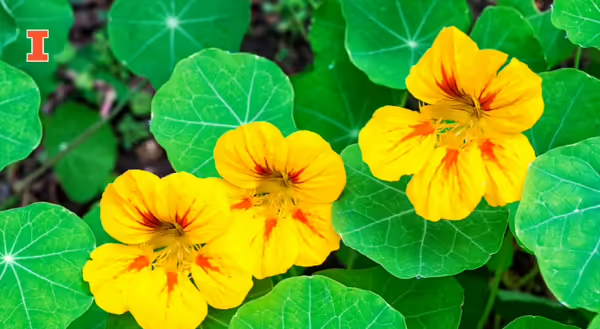
May is finally here, when Spring has sprung and homeowners are rushing to get the garden ready. As gardeners start their season, consider something new this year: edible flowers. Integrating edible flowers into gardens and cuisines are growing in popularity amongst home gardeners and chefs and can provide fun pops of color and flavor to any garden or dish.
Even though one part of the plant is safe to consume, do not assume that all plant parts are safe. When preparing edible flowers for consumption, make sure to remove the stamen and any pistils from the flower to ensure best practices are followed for safe eating (Kelley 2002). It is also important to never consume flowers or plants picked from the roadside and chemicals should not be applied to edible flowers as this can affect quality and edibility (Weisenhorn and Coyle 2018). Considering not all edible flowers are tasty (Haag 2021), selecting plant varieties based on flavor, aesthetic and climate are important for culinary and garden planning needs.
Commonly Selected Varieties
Listed below are common varieties selected for edible flowers, but not limited to this list. It is important that the proper scientific name is listed when purchasing edible flowers as this will ensure you are buying the correct plant (Weisenhorn and Coyle 2018).
Alliums: (Allium spp.) - such as chive or onion flowers, they will have an onion like flavor and works best in soups, salads and stews.
Anise hyssop (Agastache foeniculum) – Flowers and leaves have a licorice flavor and a smell similar to anise, commonly used in teas and spices
Bachelors button (Centaurea cyanus) – Flowers have a sweet and spicy flavor, used fresh or dried for tea
Beebalm (Monarda didyma) – Flowers and leaves have a mild hot flavor with notes of citrus and mint, eaten fresh or dried in many dishes
Borage (Borage officinalis) – Flowers and leaves (although hairy) have a similar taste to cucumbers, used in teas, borage can have a diuretic effect in large quantities
Calendula (Calendula officinalis) – Flower petals have a saffron taste, used for color over flavor and makes a nice garnish
Lavender (Lavandula angustifolia) – Flowers have an aromatic scent and flavor, sparingly added to ice creams, beverages, baked goods and even cosmetic products
Lemon balm (Melissa officinalis) – Leaves and flowers are lightly lemon scented with notes of citrus, good for teas or garnish
Nasturtium (Tropaeolum majus) - Flowers and leaves have a peppery flavor, can substitute for pepper or add a spicy flavor to salads
Pansy (Viola spp.) – Flowers have an earthy green taste, commonly used in salads, garnishes or beverages because of their bright eye-catching colors
Squash blossoms (Cucurbita spp.) – Flowers are commonly fried and stuffed with cheese, make sure to remove stamens and pistils before consumption
*Never experiment with eating any edible flowers or plant parts unless you know that they are safe to consume. Check with a reliable reference for edible flowers such as the Handbook of Poisonous and Injurious Plants published by the American Medical Association (AMA).
Edible flowers can add pretty pops of color to the garden and fun flavors to any culinary dish. With many choices available, there is an edible flower for everyone to enjoy in the garden. To learn more about edible flowers, reach out to your local Extension office with any questions or concerns about growing safe edible flowers and the proper varieties to choose from.
For more information, check out the University of Illinois Extension’s Local Food and Small Farms YouTube Channel for growing tips and other horticultural advice.
About the author: Alexis R. Barnes is the University of Illinois Extension Local Food Systems Small Farms Educator serving DuPage, Kane and Kendall Counties. Barnes’s areas of expertise include specialty crops, reduced tillage and cover crop integration.
References:
Haag, B. 2021. University of Illinois Extension. Flowers, Fruits, and Frass: Edible flowers can add unique color and spice to your dish. https://extension.illinois.edu/blogs/flowers-fruits-and-frass/2021-07-09-edible-flowers-can-add-unique-color-and-spice-your-dish [Accessed 13 May 2025].
Kelley, K, M. 2002. Pennsylvania State Extension. A Consumer’s Guide to Edible Flowers. https://extension.psu.edu/a-consumers-guide-to-edible-flowers [Accessed 15 May 2025]
Weisenhorn, J, Coyle, G. 2018. University of Minnesota Extension. Yard and Garden: Edible Flowers. https://extension.umn.edu/flowers/edible-flowers [Accessed 13 May 2025].